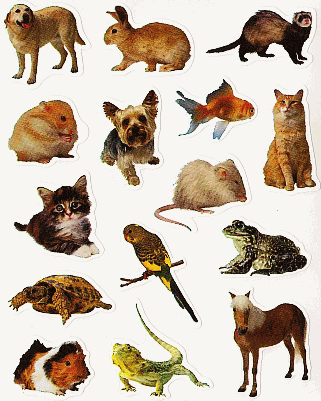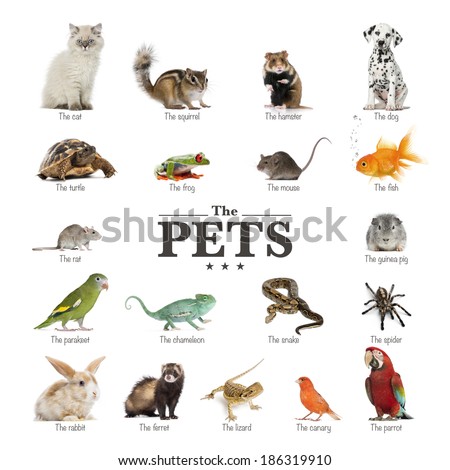Getting to Know Your Cat’s Sleeping Habits
Getting to Know Your Cat’s Sleeping Habits
 When it comes to sleeping, cats are truly the experts. Any cat owner will tell you that their cat sometimes seems to sleep more than it does anything else! But, what they may not know is that there are a number of interesting facts regarding cats and sleep. Here is a look at a few of them.
When it comes to sleeping, cats are truly the experts. Any cat owner will tell you that their cat sometimes seems to sleep more than it does anything else! But, what they may not know is that there are a number of interesting facts regarding cats and sleep. Here is a look at a few of them.
Where Does Your Kitty Sleep?
While some cat owners will swear that their cats will sleep just about anywhere at any given time, cats actually do have their preferences. According to one survey that was conducted online, for example, older cats seem to prefer sleeping at the foot of the bed when they sleep with their owners, while younger cats seem to prefer sleeping on the pillow. Regardless of age, most cats are simply looking for a place that is warm and cozy for their naps. If it is warm outside, however, your cat will likely look for a shaded place to sleep. In the winter, on the other hand, it will seek out a heat source or a ray of sunshine to cuddle under. While temperature is important, the cat also wants to feel safe and comfortable in its chosen spot, which is why so many prefer to snuggle up next to their owners whenever they can.
Speaking of sleeping in bed with their owners, about 96% of those who participated in the survey admitted that they allow their feline friends to sleep in their bedrooms. Only about 50% of those cats, however, are allowed to sleep in the bed and about 38% of the cats actually sleep on the pillow.
How Long Does Your Kitty Sleep?
It may seem like your cat sleeps away its entire day because it does actually sleep for the majority of its day. In fact, experts estimate that the average cat sleeps anywhere from 13 to 16 hours per day. The exact amount of time a cat sleeps, however, varies from cat to cat. The age and personality of your cat are two of the biggest factors that determine how long your cat will sleep. If it is an older cat or one that is generally inactive, for example, it will likely sleep longer hours than one that is younger and likes to keep busy.
Despite the long hours of sleep that they clock in, it should be noted that cats generally do not sleep through an entire night. Therefore, if you allow your kitty to sleep in bed with you, it is possible that it will disturb you early in the morning when it gets up and decides it wants to eat or play while you are still trying to sleep.
If your cat is causing too much distraction during the night and making it difficult for you to sleep, you might want to consider setting up a sleeping space for it in another room. Keep in mind that cats like to sleep on top of something, so purchase a feline bed or simply fold up some blankets for your kitty to rest upon. This way, you can both get the rest you are looking for.…






 By the time your new bundle of fluff arrives home she will already more than likely have learnt how to use cat litter trays by copying her Mum. Your kitten will have followed her Mum to the litter tray and mimicked her. If however your kitten was removed from her Mum too early chances are she may not have yet learnt how to use the tray and it will be your job as her new adopted Mum to train her.
By the time your new bundle of fluff arrives home she will already more than likely have learnt how to use cat litter trays by copying her Mum. Your kitten will have followed her Mum to the litter tray and mimicked her. If however your kitten was removed from her Mum too early chances are she may not have yet learnt how to use the tray and it will be your job as her new adopted Mum to train her. Most owners keep their ferrets inside their cages since they are very active animals. But if you have at least three hours a day of your free time to supervise your ferrets and allow them to play with their ferret toys, your pet will be able to stay happy and healthy at all times. You can also use this so-called playtime to clean their cage or groom your pets. The more time of play you give to your ferret, the better it is for them. This is because they love to engage in recreational activities and they are truly one of the most mischievous creatures that you can bring home with you.
Most owners keep their ferrets inside their cages since they are very active animals. But if you have at least three hours a day of your free time to supervise your ferrets and allow them to play with their ferret toys, your pet will be able to stay happy and healthy at all times. You can also use this so-called playtime to clean their cage or groom your pets. The more time of play you give to your ferret, the better it is for them. This is because they love to engage in recreational activities and they are truly one of the most mischievous creatures that you can bring home with you. There are many problems that can occur from pets being left unprotected from the parasites that populate the earth. Simple mosquito bites can end up being deadly to a dog. Fleas can cause all kinds of problems to the animal and can even infest a house creating a lot of problems to the family as well. Then there are ticks that carry an array of bug born illnesses, including Lyme disease. While many of these illnesses and diseases caused by these parasites can be a challenge to get rid of, many of them are simple to prevent. One of the best and easiest methods of preventing these problems is to use K9 Advantix.
There are many problems that can occur from pets being left unprotected from the parasites that populate the earth. Simple mosquito bites can end up being deadly to a dog. Fleas can cause all kinds of problems to the animal and can even infest a house creating a lot of problems to the family as well. Then there are ticks that carry an array of bug born illnesses, including Lyme disease. While many of these illnesses and diseases caused by these parasites can be a challenge to get rid of, many of them are simple to prevent. One of the best and easiest methods of preventing these problems is to use K9 Advantix. Okay, I’ll admit that one of the first things I noticed when reading the back of the DVD cover was that the DVD was 45 minutes long. The reason this stood out is because I’m so used to YMAA DVDs containing two and three hour programs. Even with the shorter length, “Xingyiquan: Twelve Animals Kung Fu and Applications” with Dr. Yang, Jwing-Ming and Master Liang, Shou-Yu is an informative and well produced DVD reference on this Chinese internal martial art that can be translated to “Shape-Mind Fist.”
Okay, I’ll admit that one of the first things I noticed when reading the back of the DVD cover was that the DVD was 45 minutes long. The reason this stood out is because I’m so used to YMAA DVDs containing two and three hour programs. Even with the shorter length, “Xingyiquan: Twelve Animals Kung Fu and Applications” with Dr. Yang, Jwing-Ming and Master Liang, Shou-Yu is an informative and well produced DVD reference on this Chinese internal martial art that can be translated to “Shape-Mind Fist.” * Food
* Food – Heart rate: 60-90 BPM, found by listening (ausculting) with stethoscope at fleece-free area under elbow. Heart rates can be increased due to exercise/exertion/excitement, stress, fever, or pain. Arrhythmias are common in SAC’s-generally no big deal.
– Heart rate: 60-90 BPM, found by listening (ausculting) with stethoscope at fleece-free area under elbow. Heart rates can be increased due to exercise/exertion/excitement, stress, fever, or pain. Arrhythmias are common in SAC’s-generally no big deal.